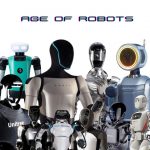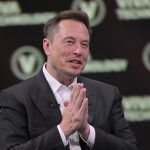[wpadcenter_ad id=242 align=’none’]
The Rise of Tesla: A Vanguard in the Electric Vehicle Revolution
Founded in 2003, Tesla, Inc. has made significant strides in advancing the technology and accessibility of electric vehicles (EVs). Spearheaded by Elon Musk, the company has not only altered the perceptions surrounding electric cars but has also established itself as a leader in the automotive industry. Tesla’s approach involves high-performance, aesthetically pleasing electric vehicles and a robust ecosystem including charging infrastructure and battery technology which distinguishes it from other automakers.
The Genesis and Vision of Tesla
Tesla was founded by Martin Eberhard and Marc Tarpenning, although Elon Musk is often recognized as a co-founder due to his early involvement and substantial financial contributions. The company was named after Nikola Tesla, a pioneer in electrical engineering. Elon Musk’s vision for Tesla was clear from the outset: to prove that electric vehicles could surpass traditional gasoline-powered cars in both performance and convenience. With this goal, Tesla aimed to play a pivotal role in the transition towards sustainable transportation.
Breakthrough Model: Roadster
Tesla’s debut vehicle, the Tesla Roadster, shattered many preconceived notions about electric vehicles when it was released in 2008. Based on a chassis borrowed from Lotus, the Roadster demonstrated impressive performance metrics, boasting acceleration from zero to 60 mph in under four seconds. More importantly, it showcased a range of over 200 miles on a single charge — a significant milestone at the time.
The Model S: Elevating Expectations
The introduction of the Model S in 2012 was a turning point for Tesla. This model was a fully original design by Tesla, unlike the Roadster. The Model S won numerous awards, including Motor Trend’s 2013 Car of the Year, and set new standards in terms of range and interior technology, featuring an impressive 17-inch touchscreen interface. The Model S also introduced Autopilot, Tesla’s advanced driver-assistance system, marking a significant leap towards autonomous driving technology.
Mass Market Expansion: Model 3 and Model Y
The launch of the Model 3 in 2017 was perhaps Tesla’s most significant move, as it signaled the company’s foray into more affordable vehicles. The Model 3 was aimed at providing a lower entry price without compromising the core features Tesla was known for. Following its success, the Model Y, a compact SUV, was launched, which shared many parts with the Model 3, allowing for cost-effective production. These models have greatly contributed to making electric vehicles accessible to a broader audience.
Innovation in Battery Technology and Energy Storage
A crucial component of Tesla’s strategy is its innovation in battery technology. The company has continuously worked on improving battery capacity, longevity, and cost-efficiency through ventures like the Gigafactory in Nevada, in partnership with Panasonic. Tesla has also expanded into energy storage solutions, with products like the Powerwall, demonstrating their broader commitment to sustainable energy beyond vehicles.
Charging Infrastructure: Supercharger Network
To support its EVs, Tesla has developed an expansive network of Supercharger stations, where drivers can charge their cars swiftly and conveniently on major highways and in urban areas. This network has been vital in alleviating ‘range anxiety’ – a common concern among potential EV buyers about the travel range of electric vehicles.
Challenges and the Road Ahead
Despite its success, Tesla faces several challenges, including production delays, questions about build quality, and intense competition from both established automakers and new entrants into the EV market. However, Tesla continues to innovate, not only in vehicle technology but also in their manufacturing process with initiatives like the Gigafactory.
As we move forward, Tesla’s role in the EV industry will likely continue to evolve, shaped by technological advances, regulatory changes, and shifts in consumer preferences. The journey is far from over, and Tesla’s impact on the automotive industry suggests a greener, more sustainable future is possible within our lifetimes.







